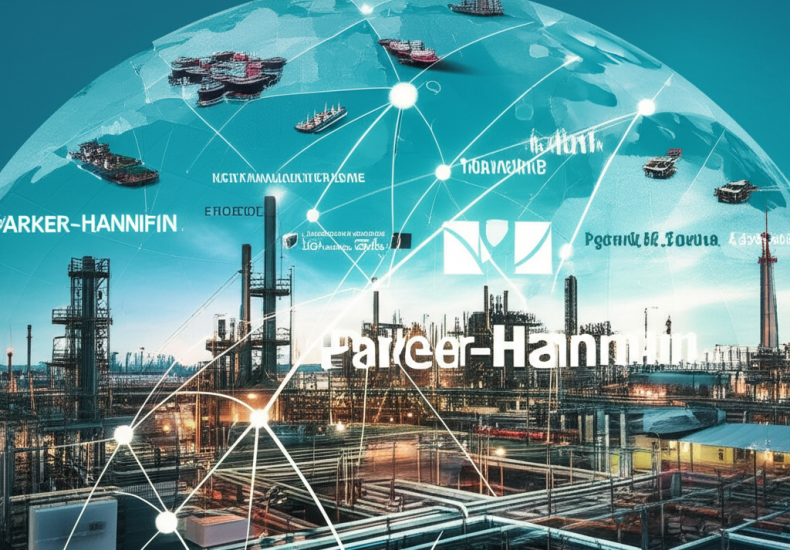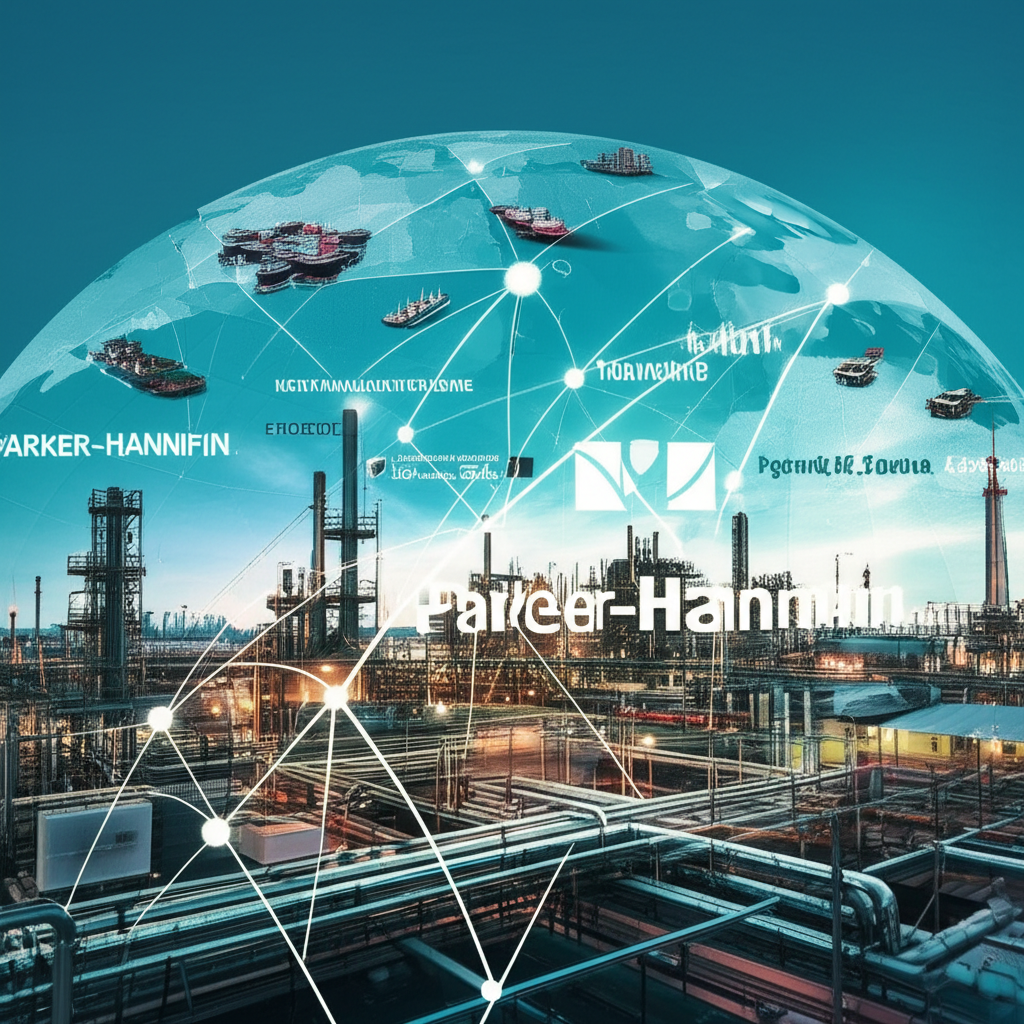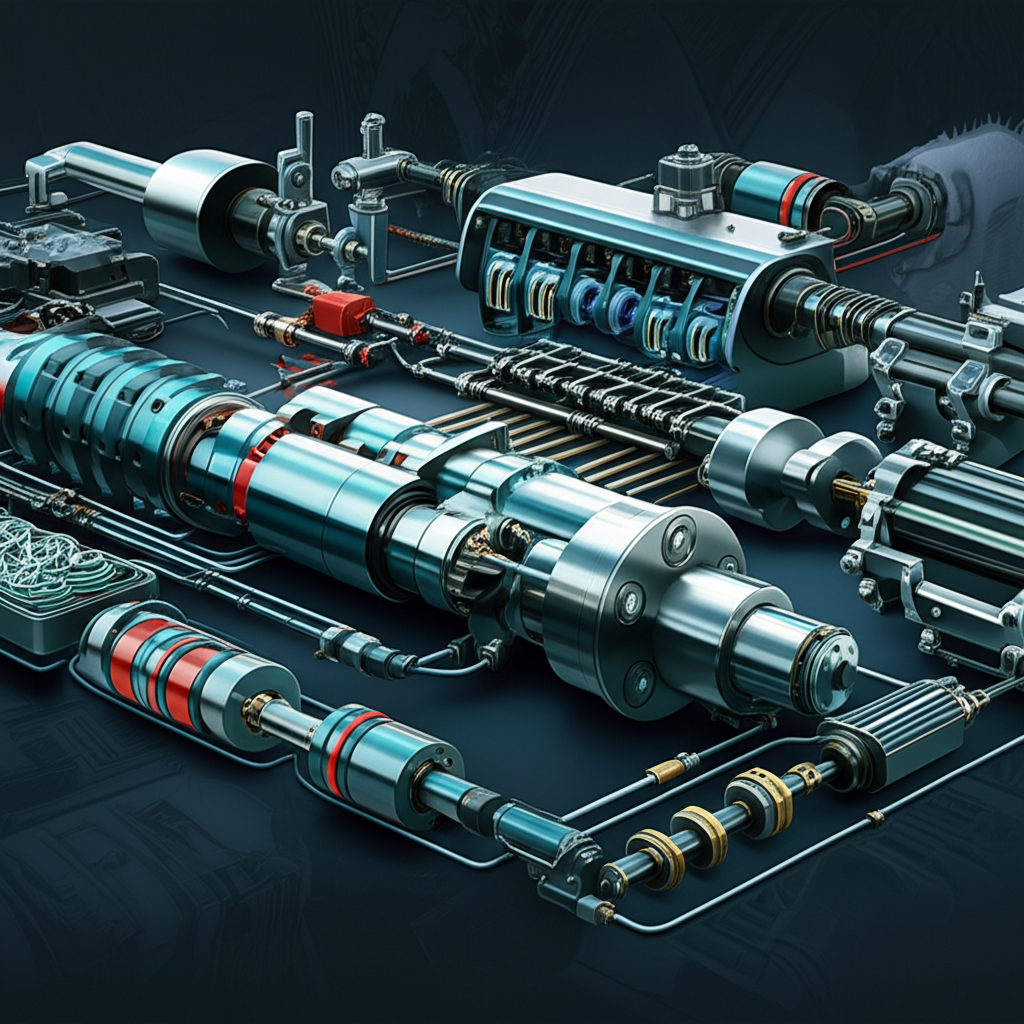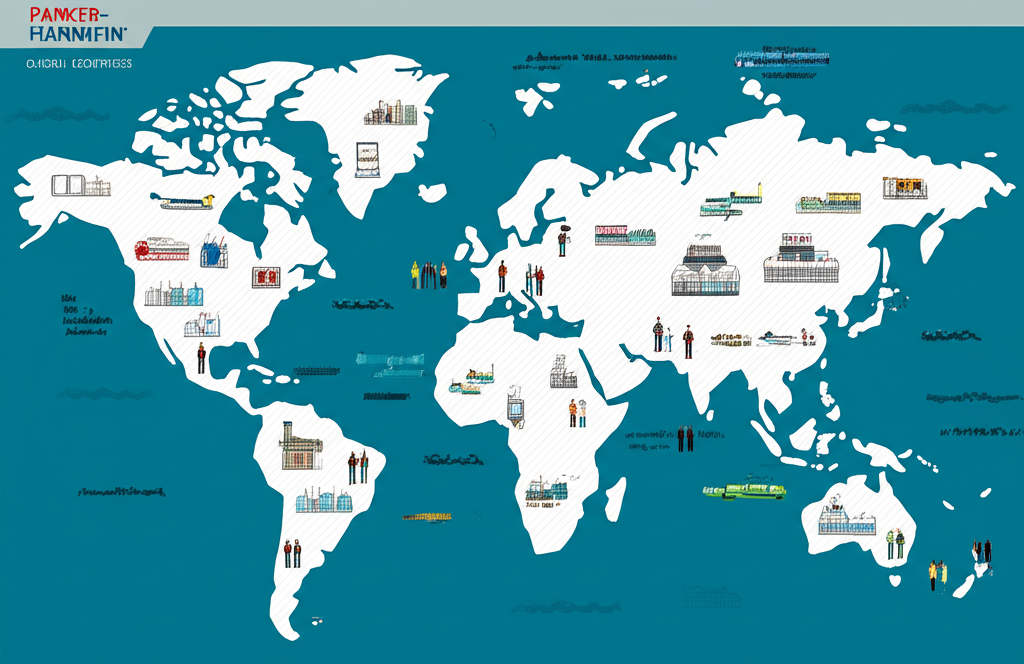
PH Stock: 5 Key Factors Investors Must Know Before Buying Parker-Hannifin Shares
Table of Contents
ToggleIntroduction: Understanding Parker-Hannifin (PH) as an Investment

Parker-Hannifin Corporation (NYSE: PH) has long stood at the forefront of motion and control innovation, shaping the way industries operate across the globe. As a key player in the industrial manufacturing sector, its influence extends far beyond factory floors and aerospace hangars—it resonates powerfully in investment portfolios. For those evaluating PH as a potential holding, understanding the company means looking beyond stock charts to grasp its operational depth, financial resilience, and long-term strategic positioning. This analysis dives into the core drivers behind Parker-Hannifin’s market presence, unpacking its financial performance, historical stock trends, current valuation, and future prospects. Whether you’re assessing dividend reliability, growth potential, or sector exposure, this deep dive aims to equip investors with a nuanced perspective on one of the industrial world’s enduring names.
Parker-Hannifin Corporation at a Glance

Parker-Hannifin is not just a manufacturer—it’s an engineering force that powers critical systems in some of the most demanding environments on Earth. From the hydraulics that control heavy construction equipment to the flight systems aboard commercial jets, the company delivers precision-engineered solutions across mobile, industrial, and aerospace applications. Its technologies are embedded in everything from medical devices to renewable energy infrastructure, making it a silent but essential partner in global industrial progress. With a vast network of operations and a reputation for reliability, Parker-Hannifin continues to expand its footprint in markets where performance and safety are non-negotiable.
What is Parker-Hannifin?
Established in 1917, Parker-Hannifin has evolved from a small fluid power startup into a multinational industrial powerhouse. Today, the company operates through two major business segments: Diversified Industrial and Aerospace Systems. The Diversified Industrial division serves a broad range of sectors—including factory automation, energy, transportation, and healthcare—by providing components and systems that manage motion, fluid, and power. This segment powers everything from automated assembly lines to advanced medical diagnostics equipment. Meanwhile, the Aerospace Systems group plays a pivotal role in both commercial and defense aviation, supplying hydraulic systems, fuel management technology, flight controls, and environmental systems for aircraft manufacturers and maintenance providers worldwide. With a presence in approximately 50 countries and a workforce exceeding 55,000 employees, Parker-Hannifin’s scale is matched only by its technical depth. Its consistent ranking on the Fortune 250 list is more than a badge of size—it reflects sustained performance, operational excellence, and enduring investor confidence.
Key Financial Highlights
Parker-Hannifin’s financial profile reflects disciplined execution and strategic foresight. Over the past decade, the company has maintained steady revenue growth, supported by organic innovation and well-integrated acquisitions. Its net income margins have remained resilient, even during periods of economic uncertainty, thanks to cost optimization and pricing discipline. Strong free cash flow generation enables the company to reinvest in R&D, pursue strategic acquisitions, and return capital to shareholders through both dividends and share repurchases. This financial flexibility strengthens its competitive moat and enhances investor appeal. Moreover, its diversified exposure across end markets acts as a natural hedge—when one sector slows, others often remain stable or grow, contributing to overall earnings consistency. This balance has made Parker-Hannifin a go-to name for investors seeking both growth and income within the industrial space.
PH Stock Performance Today: Key Metrics and Real-Time Data

To assess Parker-Hannifin’s current market standing, investors turn to a set of key metrics that offer insight into valuation, performance, and investor sentiment. These figures, updated daily, provide a real-time pulse on how the market views the company amid shifting economic conditions and sector dynamics.
Current Parker-Hannifin Stock Price (PH)
As of the latest trading session, Parker-Hannifin’s stock price (PH) reflects the collective judgment of market participants weighing recent performance, macroeconomic indicators, and sector-specific trends. Daily fluctuations in share value are influenced by a mix of factors, including earnings reports, guidance updates, supply chain developments, and broader market volatility. The intraday price range gives clues about short-term sentiment and volatility, while trading volume indicates the level of market participation. Elevated volume during price movements often signals strong conviction—either from buyers stepping in or sellers exiting. For live tracking, investors frequently consult financial platforms that offer real-time data, including interactive charts and historical comparisons—such as the real-time quotes and charting tools for PH available on Yahoo Finance.
Essential Valuation Metrics for PH
Evaluating whether Parker-Hannifin stock is fairly valued requires a multi-metric approach:
- Market Capitalization: This figure, calculated by multiplying the current share price by the total number of outstanding shares, reflects the market’s overall valuation of the company. As a Fortune 250 firm, Parker-Hannifin’s market cap places it among the largest industrial players globally.
- P/E Ratio (Price-to-Earnings Ratio): A core metric for valuation, the P/E ratio compares the stock price to earnings per share (EPS). A higher-than-average P/E may suggest growth expectations, while a lower ratio could indicate undervaluation—or underlying concerns. Comparing PH’s P/E to both its historical average and industry peers helps contextualize its current price.
- EPS (Earnings Per Share): This measures the company’s profitability on a per-share basis. Consistent EPS growth is a strong signal of operational health and effective management, often rewarded by the market over time.
- Dividend Yield: Parker-Hannifin has maintained a long-standing commitment to returning capital to shareholders. Its dividend yield—annual dividends divided by the current stock price—makes it a compelling choice for income-oriented investors, especially within the industrial sector.
- Other Metrics: Additional indicators such as Price-to-Sales (P/S), Price-to-Book (P/B), and Debt-to-Equity ratios provide further context. These help assess valuation relative to revenue and assets, while also highlighting the company’s leverage and financial stability compared to peers.
Together, these metrics form a comprehensive picture of PH’s investment appeal, allowing for informed decisions based on both fundamentals and market sentiment.
Historical Parker-Hannifin Stock Price & Trends
Understanding Parker-Hannifin’s past performance offers more than just context—it reveals patterns of resilience, adaptation, and growth that are difficult to capture in quarterly reports alone.
PH Stock Price History: A Long-Term View
Over the last decade, Parker-Hannifin’s stock has demonstrated a consistent upward trajectory, outpacing many of its industrial peers and often exceeding broader market benchmarks like the S&P 500. This long-term appreciation has been driven by a combination of solid earnings, strategic expansion, and successful integration of acquisitions—most notably the 2017 acquisition of Clarcor, which strengthened its filtration and engineered materials offerings. Periods of strong growth often followed positive earnings surprises, new product rollouts, or upbeat guidance from management. However, like all industrial stocks, PH has faced downturns, particularly during economic recessions or global disruptions such as the 2008 financial crisis or the 2020 pandemic. Yet, its diversified business model and strong balance sheet have enabled it to weather these storms and resume growth more quickly than many competitors. Long-term charts reveal not just price movements, but a story of reinvention and resilience—where innovation and global reach have consistently translated into shareholder value.
Understanding PH Stock Splits and Other Corporate Actions
Corporate actions play a subtle but meaningful role in shaping investor perception and market dynamics. Parker-Hannifin has executed stock splits in the past—a move designed to make shares more accessible by increasing the number of outstanding shares and reducing the price per share proportionally. For example, a 2-for-1 split doubles the number of shares an investor holds while halving the price, leaving the total value unchanged. While the intrinsic value remains the same, a lower share price can attract retail investors who may perceive high-priced stocks as less approachable. Beyond stock splits, other corporate moves have significantly influenced PH’s trajectory. The acquisition of Clarcor not only expanded its product portfolio but also enhanced its presence in high-margin filtration markets. Share buybacks have helped boost EPS by reducing the share count, while consistent dividend increases have reinforced its reputation as a reliable income stock. Monitoring these actions provides insight into management’s capital allocation strategy and long-term vision.
Is Parker-Hannifin Stock a Good Buy? An Investment Thesis
The question of whether Parker-Hannifin is a good investment doesn’t have a one-size-fits-all answer—it depends on an investor’s goals, risk tolerance, and market outlook. However, a balanced assessment reveals a company with compelling fundamentals and forward momentum.
Analyst Consensus and Price Predictions for PH
Wall Street analysts regularly evaluate Parker-Hannifin, issuing ratings ranging from “Strong Buy” to “Hold” based on their outlook for earnings, margins, and macroeconomic conditions. The current consensus typically leans positive, with many analysts citing the company’s strong positioning in high-growth areas like industrial automation and aerospace recovery. Price targets are derived from models such as discounted cash flow (DCF) analysis, which projects future cash flows and discounts them to present value, as well as comparable company analysis (CCA), which benchmarks PH against similar industrial firms. These models incorporate variables like expected revenue growth, margin expansion, and capital efficiency. While analyst opinions can shift with new data—such as weaker-than-expected industrial orders or supply chain delays—the average price target often suggests moderate upside from current levels. Investors should treat these forecasts as informed estimates rather than guarantees, using them as part of a broader research process.
Strengths & Opportunities for Parker-Hannifin
Several core strengths support a bullish case for PH:
- Strong Market Position: Parker-Hannifin holds leadership positions in multiple niche markets, benefiting from brand trust, technical expertise, and long-standing customer relationships.
- Diversified Portfolio: Its revenue streams span aerospace, industrial automation, medical technology, and energy, reducing dependence on any single market and smoothing earnings volatility.
- Innovation and Technology Leadership: The company invests heavily in R&D, staying ahead in critical areas like electrification, digital hydraulics, and smart sensors—technologies that are redefining industrial efficiency.
- Global Expansion: Operations across North America, Europe, and Asia allow Parker-Hannifin to tap into emerging market growth while balancing regional economic cycles.
- Strategic Acquisitions: A disciplined M&A strategy has consistently added value, with successful integrations expanding capabilities and market access.
- Robust Dividend History: With over 60 consecutive years of dividend increases, Parker-Hannifin is a rare industrial Dividend Aristocrat, appealing to conservative and income-focused investors alike.
Risks & Challenges to Consider
Despite its strengths, Parker-Hannifin faces meaningful risks:
- Economic Downturns: Industrial demand is cyclical. A slowdown in manufacturing or capital spending can directly impact order volumes and margins.
- Industry Competition: Rivals such as Eaton, Honeywell, and Bosch compete aggressively in overlapping markets, pressuring pricing and innovation timelines.
- Supply Chain Issues: Recent years have shown how vulnerable global manufacturing can be to disruptions in raw materials, semiconductors, or logistics.
- Geopolitical Factors: Trade tensions, export controls, and regional conflicts can disrupt operations and access to key markets.
- Currency Fluctuations: With over half of its revenue generated outside the U.S., a strong dollar can erode earnings when converted back to USD.
- “Why is Parker-Hannifin stock dropping?”: Sharp declines often stem from missed earnings, weak guidance, or broader industrial selloffs. For instance, concerns about slowing aerospace deliveries or weakening factory output can trigger negative sentiment. Investors should analyze the root cause rather than reacting emotionally to price swings.
A prudent investment approach weighs these risks against the company’s long-term strengths and strategic direction.
Factors Influencing Parker-Hannifin Stock Performance
Parker-Hannifin’s stock price doesn’t move in isolation—it responds to a complex interplay of macroeconomic, sector-specific, and company-level forces.
Industry Trends and Market Dynamics
The industrial landscape is undergoing a transformation, and Parker-Hannifin is at the center of several key shifts. The push toward **electrification**—in everything from electric vehicles to hybrid aircraft—requires new fluid and motion control solutions, which the company is actively developing. Similarly, the rise of **automation and digitalization** in factories is driving demand for smarter, more connected components, where Parker’s digital hydraulics and predictive maintenance systems offer a competitive edge. Sustainability is another growing priority; industries are seeking energy-efficient systems, and Parker’s innovations in regenerative braking and low-leakage valves align well with this trend. In aerospace, the recovery of commercial air travel and increasing defense spending are boosting demand for new aircraft and aftermarket services—both areas where Parker’s systems are essential. These trends aren’t just background noise—they’re active growth engines that could fuel future revenue and margin expansion.
Economic Conditions and Global Reach
Parker-Hannifin’s global footprint is both an advantage and a vulnerability. On one hand, its operations in North America, Europe, and Asia allow it to capture growth in diverse economies and offset regional downturns. On the other, it means the company must navigate varying interest rates, inflation levels, and regulatory environments. Economic strength generally correlates with higher industrial output and capital investment—both of which drive demand for Parker’s products. Conversely, rising interest rates can slow corporate spending and consumer demand, indirectly affecting industrial orders. Currency movements also matter: while international sales contribute significantly to revenue, a strong U.S. dollar can reduce the value of those earnings when repatriated. This global exposure, detailed on the Parker-Hannifin Investor Relations page, requires sophisticated risk management but also offers long-term growth potential in emerging markets.
Recent News and Investor Sentiment
News flow can have an immediate impact on PH’s stock price. Earnings announcements are particularly influential—strong results or optimistic guidance can lift the stock, while missed expectations or cautious outlooks may trigger declines. For example, a beat on EPS or an upward revision in aerospace segment margins can boost investor confidence. Strategic moves, such as entering a new joint venture, launching a breakthrough product, or announcing a share buyback, also shape sentiment. Conversely, unexpected challenges—like supply chain delays, facility outages, or regulatory hurdles—can lead to short-term selloffs. Staying informed through financial news outlets and the company’s official press releases helps investors separate temporary noise from meaningful shifts in the business.
Conclusion: Navigating Your Investment in Parker-Hannifin Stock
Parker-Hannifin (PH) represents a rare blend of industrial heritage and forward-looking innovation. Its leadership in motion and control technologies, combined with a diversified global business and disciplined financial management, makes it a compelling long-term holding for many investors. The stock offers exposure to high-impact trends like automation, electrification, and aerospace modernization, while its consistent dividend and strong balance sheet provide stability. Yet, it is not immune to the cyclical nature of industrial markets, competitive pressures, or global uncertainties. Success as a PH investor comes from understanding both the company’s enduring strengths and the external forces that can sway its stock in the short term. As with any investment, aligning PH’s profile with your financial goals and risk appetite is essential. Informed, patient investors may find that Parker-Hannifin offers not just industrial power—but investment potential.
Frequently Asked Questions About Parker-Hannifin Stock
Is Parker-Hannifin Corporation (PH) a publicly traded company?
Yes, Parker-Hannifin Corporation is a publicly traded company, listed on the New York Stock Exchange (NYSE) under the ticker symbol PH.
What is the current investment outlook for Parker-Hannifin (PH) stock?
The investment outlook for PH stock is generally positive, supported by its strong market position, diversified portfolio, and innovation in growth areas like electrification. However, it’s subject to economic cycles and industry competition. Analyst consensus often leans towards “Buy” or “Hold.”
What factors influence the price performance of Parker-Hannifin (PH) stock?
Key factors include global economic conditions, industry trends (e.g., automation, electrification, aerospace demand), company earnings reports, strategic acquisitions, analyst ratings, and broader market sentiment.
Has Parker-Hannifin (PH) ever had a stock split, and what was its impact?
Yes, Parker-Hannifin has executed stock splits in its history. A stock split increases the number of outstanding shares and proportionally decreases the share price, making shares more accessible to a wider range of investors and potentially improving liquidity, without changing the total value of an investor’s holdings.
Is Parker-Hannifin considered a Fortune 250 company, and what does that signify for investors?
Yes, Parker-Hannifin is consistently ranked among the Fortune 250 companies. This signifies its substantial revenue, market leadership, and strong financial standing, often indicating a degree of stability and investor confidence due to its size and influence.
Where can I find historical stock price data for Parker-Hannifin (PH)?
Historical stock price data for Parker-Hannifin (PH) can be found on major financial news websites such as Yahoo Finance, Google Finance, Bloomberg, and the company’s own investor relations website.
What are the key financial metrics (P/E, EPS, dividend yield) for Parker-Hannifin stock?
Key metrics include:
- P/E Ratio: Compares stock price to earnings per share, indicating valuation.
- EPS (Earnings Per Share): Measures profitability per share.
- Dividend Yield: Annual dividend as a percentage of share price, important for income investors.
These figures vary and should be checked against current market data.
Why might Parker-Hannifin stock (PH) experience a drop in price?
Drops in PH stock price can be due to various factors including broader market downturns, negative earnings surprises, economic slowdowns affecting industrial demand, supply chain disruptions, or specific company news that leads to a reassessment of its future prospects.
How does Parker-Hannifin’s global presence affect its stock performance?
Parker-Hannifin’s global presence provides diversification across different economies and markets, potentially mitigating regional risks. However, it also exposes the company to geopolitical risks, currency fluctuations, and varying economic cycles around the world, all of which can impact stock performance.
What are the main business segments of Parker-Hannifin Corporation?
Parker-Hannifin operates primarily through two main business segments:
- Diversified Industrial: Provides motion and control technologies for a wide range of industrial and mobile markets in North America and internationally.
- Aerospace Systems: Focuses on hydraulic, fuel, flight control, and fluid conveyance systems for commercial and military aircraft.
You may also like
Calendar
| 一 | 二 | 三 | 四 | 五 | 六 | 日 |
|---|---|---|---|---|---|---|
| 1 | 2 | 3 | 4 | 5 | 6 | 7 |
| 8 | 9 | 10 | 11 | 12 | 13 | 14 |
| 15 | 16 | 17 | 18 | 19 | 20 | 21 |
| 22 | 23 | 24 | 25 | 26 | 27 | 28 |
| 29 | 30 | 31 | ||||
發佈留言
很抱歉,必須登入網站才能發佈留言。